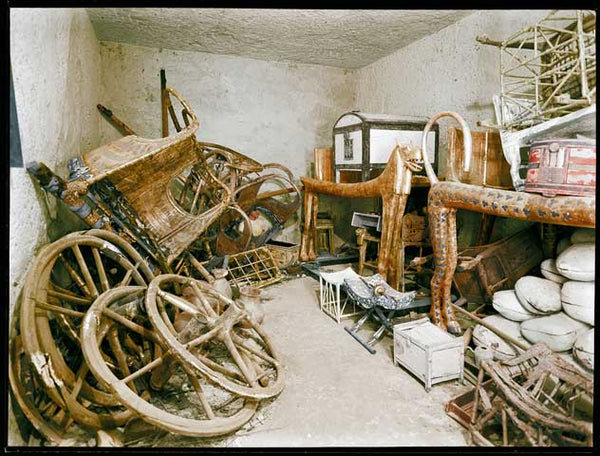King Tutankhamun was made famous by the discovery of his nearly intact tomb in November 1922 by Howard Carter.
The tomb, consisting of four small chambers, was probably not originally meant for him but for one of his high officials. It is assumed that he was buried here after his unexpectedly early death, after nine regnal years, because his original tomb was not yet ready.
The tomb may have been originally intended for Ay, who later became king but at the time was still a high court official. Once he became king Ay presumably took over the tomb originally intended for Tutankhamun.
Over 5,000 objects were found in the tomb, making it the most famous discovery in Egypt's history. Tutankhamun's treasures still draw huge crowds around the world.
Today we are looking at this life size model of the king, depicting him from the waist up, carved of wood, covered in gesso and then painted. (Gesso is a preparation of plaster and glue used as a surface for painting.)
-

While the king is wearing a royal crown with a cobra deity projecting at his brow, he only has on a simple white linen tunic through which the upper part of his rib cage shows. The cobra is made as a separate piece from gilded wood, painted in black and red. The king's skin has been painted dark red, the traditional colour used by ancient Egyptian artisans to depict men. His earlobes are pierced, which was custom for both males and females during this period.
The exact function of the bust is not known. It has been suggested by Carter that it may have served as a mannequin on which garments of the king could be draped or his jewelry displayed.



